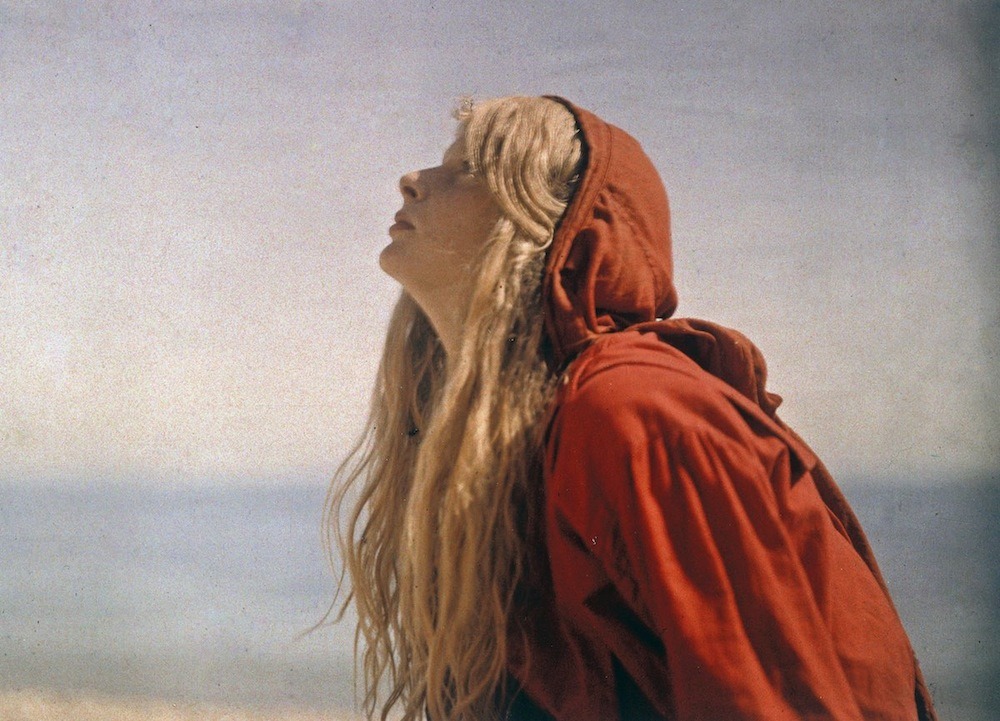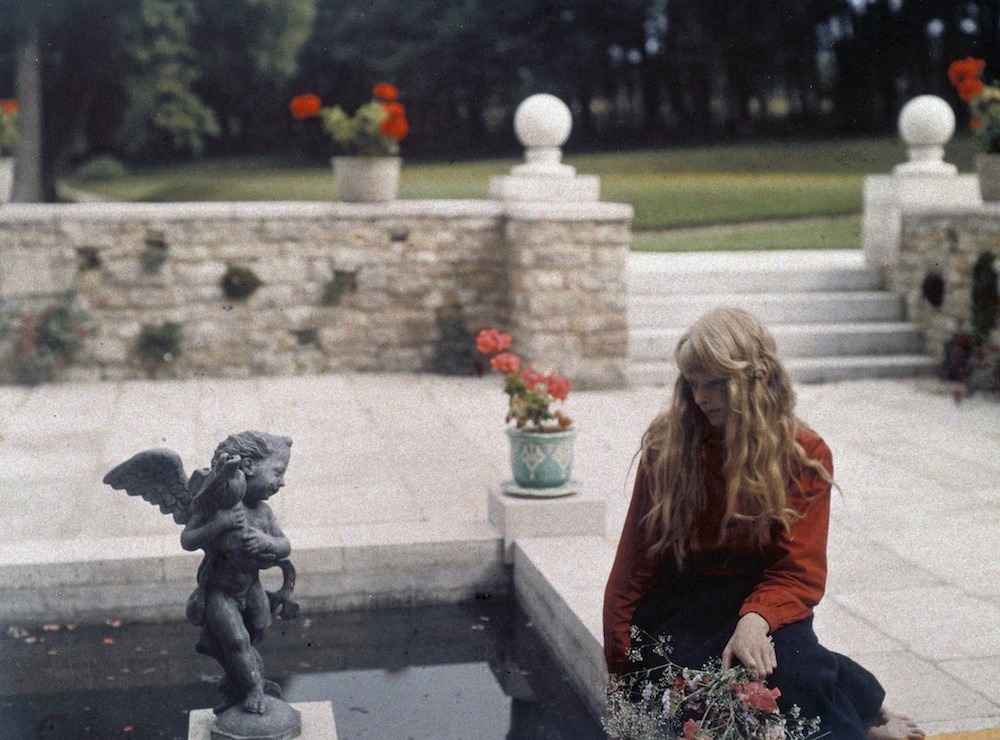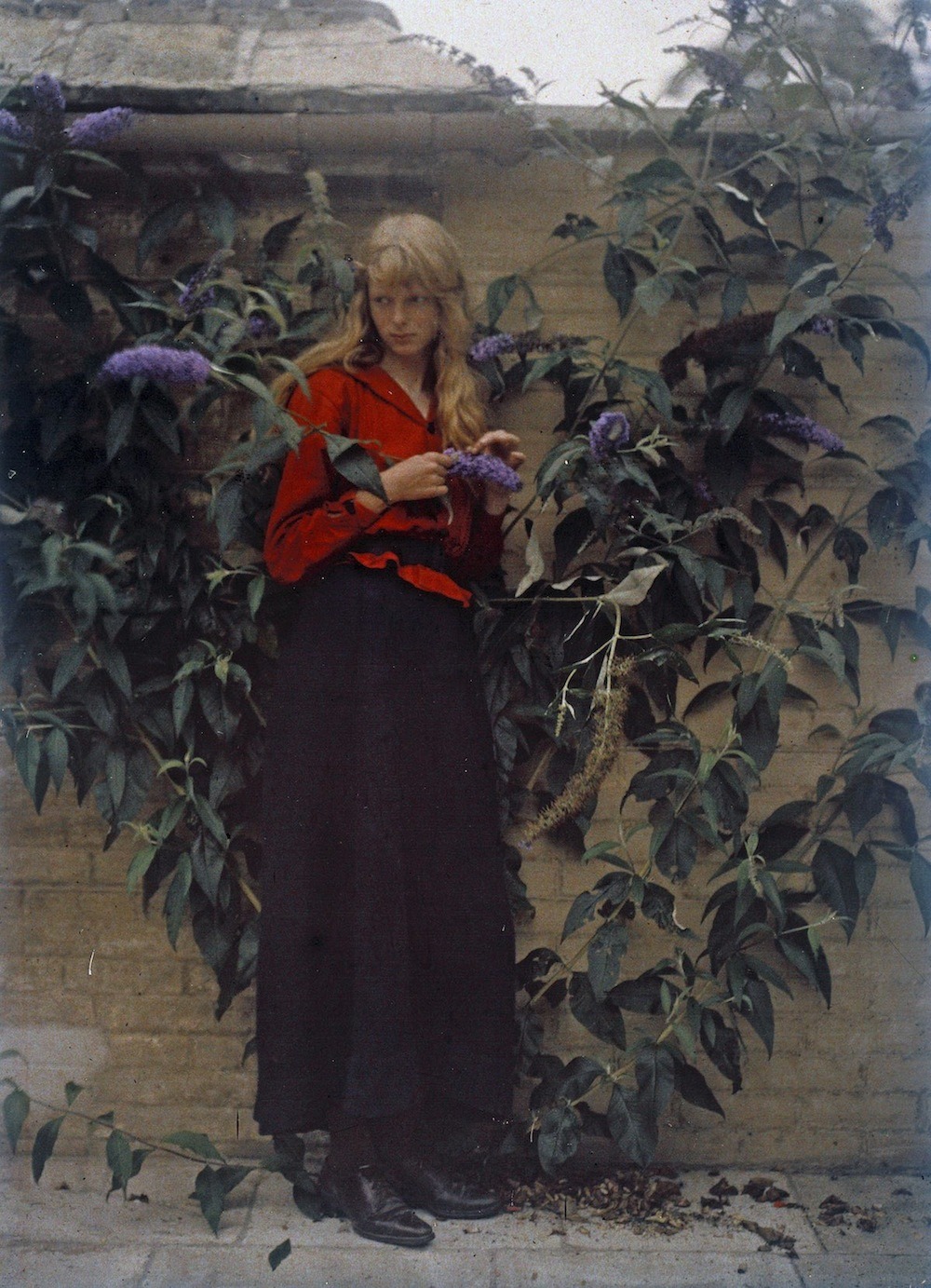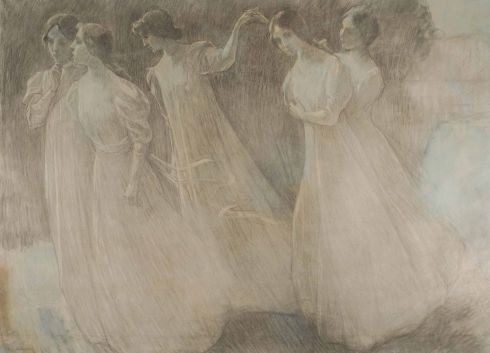These wonderful dreamy autochrome photographs of a girl in a red bathing suit at a rocky beach were taken by Mervyn O’Gorman (1871-1958). Similar to the Belgian artist Alfonse van Besten whose autochrome photographs I wrote about before, O’Gorman wasn’t a professional photographer, but rather an engineer with an interest in photography. Alongside knowing the autochrome technique, he clearly had a knack for aesthetic and beauty as well and that is what makes these photographs so timeless and captivating. The thin, pale and pretty strawberry-haired girl was O’Gorman’s daughter Christina and these photographs were taken on a rocky beach in Dorset in 1913. The pictures have a dreamy, nostalgic air which makes them belong to a world of the past, but they also seem modern in some way, maybe it’s because Christina’s poses, setting and even clothes seem modern. Naturally, the kind of bathing suit she is seen wearing is nothing like those she would be wearing today, but when we think of the Edwardian times, an image of a girl on the beach, with bare knees and barefoot certainly isn’t the first thing which comes to mind. There’s a dreamy veil over these photographs, and a tinge of sweet sensuality as well; Christina in her red bathing suit is like a shy poppy flower which starts blooming and, raising its head toward the blue sky, starts being aware of its own beauty and charm. Every time I see the boat in the background of the autochrome above, it makes me think of Arthur Rimbaud’s poem “Drunken Boat”:
“But, in truth, I have wept too much! Dawns are heartbreaking.
Every moon is atrocious and every sun bitter.
Acrid love has swollen me with intoxicating torpor
O let my keel burst! O let me go into the sea!
If I want a water of Europe, it is the black
Cold puddle where in the sweet-smelling twilight
A squatting child full of sadness releases
A boat as fragile as a May butterfly.”
Autochromes from the beach are certainly the most striking, but O’Gorman took many more pictures of his daughter Christina and she is always seen in this lovely, vibrant red which instantly captivates the viewer and brings the attention to Christina. In the last picture you can also see O’Gorman’s wife and other daughter, also on the beach.












